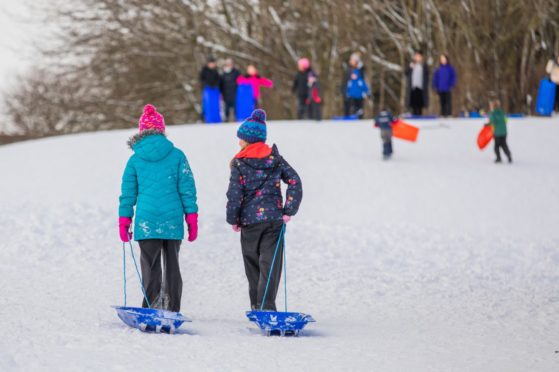NHS Grampian has released a video with tips to stay safe in the snow after treating a number of people with “potentially life-changing” injuries from sledging accidents.
In the video, emergency medicine consultant Gareth Patton says hospitals in the north-east have seen a “considerable increase” in the amount of sledging injuries coming through their doors.
They range from mild issues such as sprained ankles to very serious ones, such as spinal and head injuries – and have been affected both children and adults.
Dr Patton said: “Numbers are up considerably, and we’re seeing people with, potentially, what could be considered as life-changing injuries as a result of sledging accidents.”
He warns that the act of sledging can compact the snow or expose ice until it is almost as hard as concrete, making head injuries much more likely and far more serious.
Those injuries to the head can have “debilitating effects for weeks and months afterwards”, the consultant adds.
To help people stay safe, Dr Patton gives out a number of handy tips:
- Start off slowly
“Start slowly on a gentle slope, until you get used to the speed of the slopes and the conditions. Then, once you’re used to the conditions you can gradually go up and take on the steeper slopes.”
- Always sit or lie down on the sled
“Please don’t try and surf or snowboard down on a sledge, it’s a recipe for disaster and will result in more significant injuries.”
- Be aware of the area where your sled will come to rest
“It’s important that the ‘landing zone’ is clear and free from debris – trees, bushes, hedges. If not, there’s a risk of a sudden, abrupt stop and injuries.”
- Be aware of other people around you
“Other people will be out having fun and distracted, please try and maintain your distance to reduce the risks of collisions and accidents which will likely result in injuries.”
Watch the full video below.
